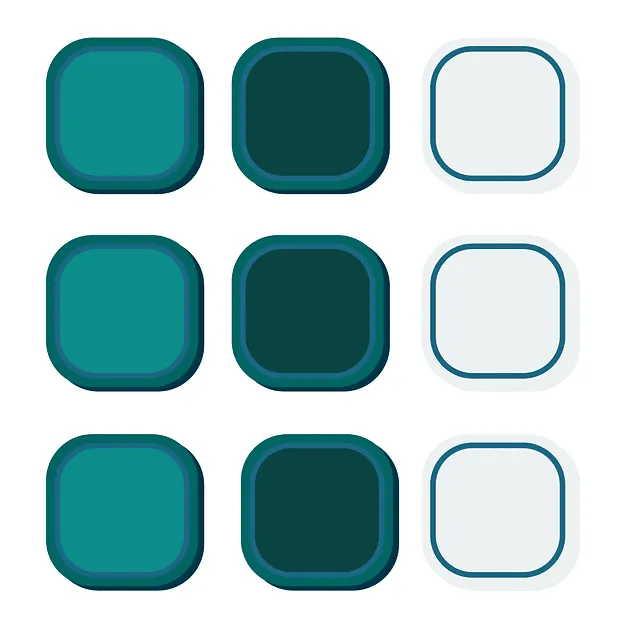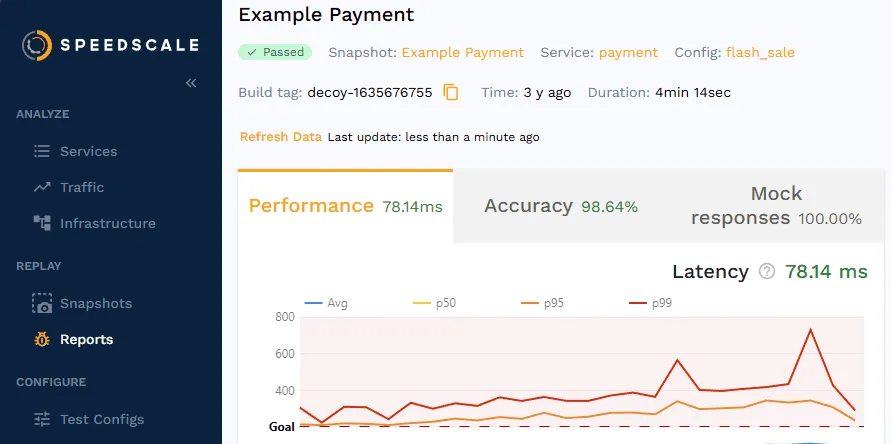Mastering Golang Mocks for Efficient Testing and Improved Code Quality
Mastering Golang Mocks for Efficient Testing and Improved Code Quality
Although GoMock is one of the most popular ways to create mocks in Golang, it’s important to understand the broader landscape of mocking methods in the language to fully leverage its potential value in testing. Mocking is a powerful technique that allows developers to isolate their code, improve test reliability, and ultimately enhance overall code quality. In this blog post, we will explore the essentials of a good mock implementation in Golang, highlighting why it’s a critical tool for developers. We’ll also look at how mocks are used in unit and integration tests, discuss their key benefits, and touch on various approaches to creating mock objects in Go. This guide is designed to provide you with a high-level understanding of mocking in Golang, setting the groundwork for deeper dives into specific tools like GoMock in other resources.
Understanding Mocking in Golang
 In Golang, mocking involves creating simulated versions of an object with external dependencies, such as databases, APIs, or other services that your application interacts with. These mock objects mimic the behavior of real objects in a controlled way, allowing developers to isolate their code and write tests to analyze its behavior independently. In essence, mocking provides a means to simulate and control the environment in which your code operates, enabling you to validate how it responds to various scenarios without relying on external systems that might be unreliable, slow, or difficult to replicate. The goal is to ensure that your code works correctly under expected conditions, handles errors gracefully, and performs reliably regardless of the state or availability of the external APIs it interacts with.
In Golang, mocking involves creating simulated versions of an object with external dependencies, such as databases, APIs, or other services that your application interacts with. These mock objects mimic the behavior of real objects in a controlled way, allowing developers to isolate their code and write tests to analyze its behavior independently. In essence, mocking provides a means to simulate and control the environment in which your code operates, enabling you to validate how it responds to various scenarios without relying on external systems that might be unreliable, slow, or difficult to replicate. The goal is to ensure that your code works correctly under expected conditions, handles errors gracefully, and performs reliably regardless of the state or availability of the external APIs it interacts with.
Unit Test vs Integration Test
Mocks are primarily used in a unit test to isolate individual functions or methods, allowing developers to focus on the logic of the code under test without external dependencies. This control makes these tests with mocks highly reliable, consistent, and faster, as they avoid real network requests, database queries, and other time-consuming operations. However, mocks can also be valuable in integration tests, though more selectively. While integration tests generally validate the interaction between real components, mocks can simulate complex or slow parts of the system, such as third-party services. For example, using mocks to replicate API responses helps test internal communication logic without relying on actual external systems, which is especially useful when testing rate-limited APIs or edge cases that are hard to replicate consistently.
Why Do We Need Mocks?
 Mocks are essential in software development, particularly for testing code in isolation without the unpredictability of real external dependencies. By replacing real components with mocks, developers can focus on testing the logic of their code, leading to more efficient, reliable, and maintainable tests.
Mocks are essential in software development, particularly for testing code in isolation without the unpredictability of real external dependencies. By replacing real components with mocks, developers can focus on testing the logic of their code, leading to more efficient, reliable, and maintainable tests.
Testing in Isolation and Consistency
Mocks isolate the code under test from its external dependencies, ensuring tests focus on internal logic rather than external systems. This isolation is crucial for identifying bugs and verifying correctness without interference. Mocks also provide consistent and controlled responses, eliminating variables like network fluctuations or service outages that can lead to unreliable test results.
Performance Improvements and Simplified Edge Case Testing
Mocks are lightweight and bypass the slow operations associated with real dependencies, significantly improving test performance, especially in large projects with extensive test suites. They also make it easy to simulate edge cases that are hard to reproduce with real systems, and test cases such as network timeouts or specific error responses, allowing developers to thoroughly validate their code’s resilience to unexpected scenarios.
Reduced Dependency on External Services and Enhanced Test Coverage
Mocks eliminate challenges associated with real external services, such as rate limits or authentication, by simulating required behaviors locally. This approach simplifies testing, removes the need for complex setup, and enhances test coverage by allowing fine-tuned control over scenarios that would be difficult to replicate with real-world interactions, ensuring comprehensive testing across a wide range of conditions.
Creating Mock Objects
 Creating mock objects in Golang allows developers to replace real dependencies with controlled simulations, enhancing test accuracy and efficiency. The most straightforward method is manually writing mocks by creating structs that implement the same interface as the dependency. While this approach offers complete control, it can become labor-intensive, particularly for complex dependencies with many methods. To streamline mock object creation, developers often turn to libraries like GoMock, which generate mock implementations directly from interfaces. These libraries reduce boilerplate code, simplify the maintenance of mocks, and provide built-in tools for setting expectations and verifying interactions. This approach not only saves time but also enhances test readability and reliability. Mocks also encourage an interface-first design, a best practice in Go that promotes modularity and testability. By defining interfaces for dependencies from the outset, developers ensure their code remains decoupled and easier to test. This design philosophy aligns with Golang’s emphasis on simplicity and clear separation of concerns, making mocks a valuable tool in any Go developer’s toolkit.
Creating mock objects in Golang allows developers to replace real dependencies with controlled simulations, enhancing test accuracy and efficiency. The most straightforward method is manually writing mocks by creating structs that implement the same interface as the dependency. While this approach offers complete control, it can become labor-intensive, particularly for complex dependencies with many methods. To streamline mock object creation, developers often turn to libraries like GoMock, which generate mock implementations directly from interfaces. These libraries reduce boilerplate code, simplify the maintenance of mocks, and provide built-in tools for setting expectations and verifying interactions. This approach not only saves time but also enhances test readability and reliability. Mocks also encourage an interface-first design, a best practice in Go that promotes modularity and testability. By defining interfaces for dependencies from the outset, developers ensure their code remains decoupled and easier to test. This design philosophy aligns with Golang’s emphasis on simplicity and clear separation of concerns, making mocks a valuable tool in any Go developer’s toolkit.
Using Interfaces for Mocking
 In Golang, creating a mock object allows developers to replace real dependencies with controlled simulations, enhancing test accuracy and efficiency. The simplest approach is manually writing mocks by creating structs that implement the same interface as the dependency, offering full control but often becoming labor-intensive. To simplify this process, libraries like GoMock generate the mock object implementation detail directly from interfaces, reducing boilerplate code, easing maintenance, and improving test readability and reliability. This is also in part why it’s important to define interfaces in Go. Mocks encourage an interface-first design, promoting modularity and testability in Go. By defining interfaces for dependencies upfront, code remains decoupled and easier to create test cases, aligning with Golang’s emphasis on simplicity and clear separation of concerns.
In Golang, creating a mock object allows developers to replace real dependencies with controlled simulations, enhancing test accuracy and efficiency. The simplest approach is manually writing mocks by creating structs that implement the same interface as the dependency, offering full control but often becoming labor-intensive. To simplify this process, libraries like GoMock generate the mock object implementation detail directly from interfaces, reducing boilerplate code, easing maintenance, and improving test readability and reliability. This is also in part why it’s important to define interfaces in Go. Mocks encourage an interface-first design, promoting modularity and testability in Go. By defining interfaces for dependencies upfront, code remains decoupled and easier to create test cases, aligning with Golang’s emphasis on simplicity and clear separation of concerns.
Writing Effective Tests with Mocks
 Writing an effective test case with a mock object in Golang goes beyond merely mocking techniques replacing real dependencies; it involves a strategic approach to ensure that tests are reliable, maintainable, and accurately validate your code’s behavior. Here are some best practices to guide you in creating effective tests with mocks.
Writing an effective test case with a mock object in Golang goes beyond merely mocking techniques replacing real dependencies; it involves a strategic approach to ensure that tests are reliable, maintainable, and accurately validate your code’s behavior. Here are some best practices to guide you in creating effective tests with mocks.
Define Mock Behavior and Set Expectations
Clearly define the behavior you expect from your mock objects by setting expectations on how mocks should be called and what they should return. Tools like GoMock allow you to specify exact function calls and expected parameters, ensuring that your code interacts with dependencies as intended. Verifying these expectations checks not only that your code functions correctly but also that it behaves appropriately in various scenarios, such as handling errors or unexpected inputs.
Keep Tests Focused and Concise
Focus each test on a single aspect of your code, targeting one behavior, method call, or logic path at a time. Avoid over-complicating your tests by mocking only what is necessary, as over-mocking can make tests difficult to understand and maintain. Utilize table-driven tests to cover multiple scenarios with minimal repetition, and leverage a mock object to dynamically adjust inputs and outputs within these scenarios, keeping your tests streamlined and focused.
Prioritize Readability and Simplicity
Strive for simplicity and clarity in your test code. Well-written tests should be easy to understand and clearly communicate their purpose. Avoid complex setups and intricate mock configurations unless they are absolutely necessary. The goal is to ensure that anyone reading the test can quickly grasp what is being tested, why the mock behaves in a particular way, and what the expected outcome should be. Clear and readable tests serve as a reliable safety net for your code and are easier to maintain over time.
Best Practices for Mocking
 Mocking is a powerful technique in Golang that, when used correctly, can greatly enhance the effectiveness of your tests. By following these best practices, you can ensure that your mocks contribute to more reliable, maintainable, and efficient testing.
Mocking is a powerful technique in Golang that, when used correctly, can greatly enhance the effectiveness of your tests. By following these best practices, you can ensure that your mocks contribute to more reliable, maintainable, and efficient testing.
Isolate Dependencies for Better Testing
Using mocks to isolate external dependencies ensures that tests focus solely on the specific functionality of the code under test. By simulating the behavior of dependencies like databases, APIs, or external APIs, you can prevent unintended interactions and maintain the purity of your tests. This isolation helps in pinpointing the exact causes of test failures, making debugging easier and more straightforward. To avoid direct calls to external APIs within your tests, replace these dependencies with mocks that replicate only the necessary interactions. This approach ensures that your tests remain fast, predictable, and free from the instability that often accompanies real-world services, such as network latency or service downtimes.
Improve Test Execution Speed
Mocks are instrumental in speeding up test execution by replacing slow components, such as databases and external APIs, with lightweight substitutes. By replicating only the necessary behavior of these components, mocks can drastically reduce the time required to run tests, making them ideal for continuous integration environments where quick feedback is crucial. When using mocks, focus on keeping them as minimal as possible, simulating only the required aspects of the real dependencies. This streamlined approach helps you write and maintain fast and focused tests, ensuring that performance remains optimal without compromising on the quality of the testing process.
Simplify Testing of Error Scenarios
Mocks excel at simulating error conditions that are often difficult to reproduce with real dependencies, such as failed network calls, timeouts, or invalid data inputs. By creating mocks that dynamically generate error responses, you can thoroughly test how your code handles these edge cases, ensuring that it fails gracefully and recovers appropriately. Leveraging mocking frameworks allows for flexible error simulation, providing a powerful way to validate error-handling logic in a controlled and repeatable manner. This capability is crucial for building robust applications that are well-prepared for real-world failures.
Enhance Code Maintainability
Maintaining accurate and up-to-date mocks is essential for ensuring the longevity and reliability of your tests. Regularly review and update mocks to reflect changes in the interfaces they implement, preventing outdated mocks from leading to false test results. Clearly structuring your mocks and documenting their purpose within the tests further simplifies maintenance, making it easier for future developers to understand and update the test suite. Proper documentation and organization of mocks also reduce the likelihood of errors during updates and make it easier to diagnose issues when they arise. This proactive approach to maintaining mocks contributes to a more maintainable codebase overall.
Increase Test Coverage
Mocks play a pivotal role in achieving high test coverage, particularly for edge cases and rare scenarios that are challenging to replicate with real components. By using mocks to simulate these conditions, you can thoroughly test your code’s behavior across a wide range of situations, increasing confidence in the robustness of your application. Regularly reviewing and expanding mock setups ensures that they remain comprehensive and aligned with the evolving needs of your codebase. This practice not only boosts test coverage but also helps in identifying potential gaps in your testing strategy, leading to continuous improvement in your testing practices.
Using Speedscale for Automatic Mocks
 Speedscale offers a cutting-edge approach to mocking by automating the creation of mocks based on recorded user traffic. This tool captures real API interactions and uses this data to generate realistic mocks that accurately reflect the behavior of external APIs. By automating the mock creation process, Speedscale eliminates the need for manual intervention, saving developers time and reducing the complexity typically involved in setting up mock environments.
Speedscale offers a cutting-edge approach to mocking by automating the creation of mocks based on recorded user traffic. This tool captures real API interactions and uses this data to generate realistic mocks that accurately reflect the behavior of external APIs. By automating the mock creation process, Speedscale eliminates the need for manual intervention, saving developers time and reducing the complexity typically involved in setting up mock environments.
Automated Mock Creation
 Speedscale’s ability to automatically generate mocks from real-world traffic is a game-changer for developers. Instead of manually configuring mocks for each test scenario, Speedscale captures live interactions and creates mocks that mirror actual API behavior. This automated process not only speeds up the testing cycle but also ensures that mocks are realistic, dynamic, and reflective of current production conditions, providing a more reliable testing environment.
Speedscale’s ability to automatically generate mocks from real-world traffic is a game-changer for developers. Instead of manually configuring mocks for each test scenario, Speedscale captures live interactions and creates mocks that mirror actual API behavior. This automated process not only speeds up the testing cycle but also ensures that mocks are realistic, dynamic, and reflective of current production conditions, providing a more reliable testing environment.
Real-World Scenarios
The mocks generated by Speedscale are grounded in real-world conditions, making them highly accurate for testing purposes. This fidelity allows developers to simulate a variety of scenarios, from normal operations to edge cases, using data that mirrors real user behavior. By testing against these realistic mocks, developers can gain deeper insights into how their applications will perform in production, leading to more robust and reliable code.
Reduces Maintenance
One of the significant advantages of using Speedscale is the reduction in maintenance overhead. Because the mocks are generated directly from real traffic, they remain up-to-date with the latest changes in API behavior, eliminating the need for constant manual updates. This automated synchronization helps keep your test environments aligned with current production realities, reducing the likelihood of test failures due to outdated mocks.
Error Reduction
Manual mock configurations are prone to errors, especially when dealing with complex APIs or rapidly changing interfaces. Speedscale’s automated approach significantly reduces these errors by directly capturing and replicating real interactions. This method ensures that your mocks are not only accurate but also tailored to your application’s specific needs, reducing the risk of false positives and enhancing the overall reliability of your tests.
Conclusion
Mastering mocking in Golang and using these mocking methods is crucial for enhancing tests and overall code quality. By using mocks, developers can isolate code, simulate real-world scenarios, and handle complex dependencies without relying on external APIs. Tools like GoMock and Speedscale simplify mock creation and maintenance, making tests more reliable and efficient, helping to achieve truly useful mocks that mirror the real implementation as close as possible. Adopting best practices, such as using interfaces and regularly updating mocks, ensures tests are robust and reflective of current code conditions. Ultimately, effective mocking leads to faster, more accurate testing and builds confidence in your application’s stability and performance.